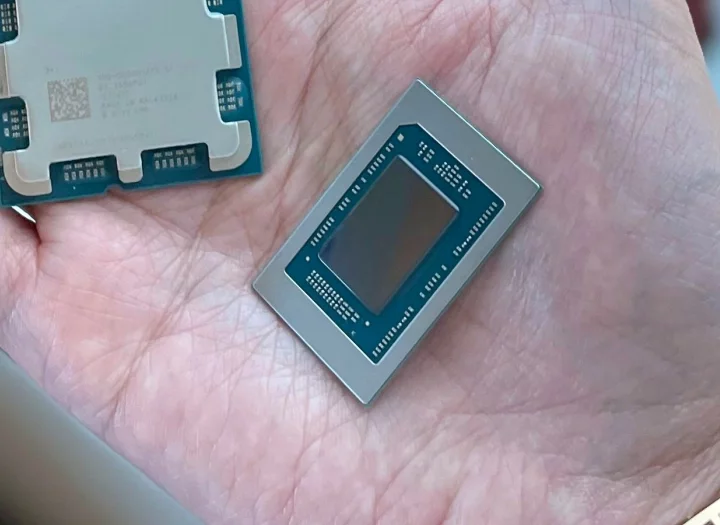In March, there was a report that AMD might be planning to incorporate some artificial intelligence into future generations of FSR (FidelityFX Super Resolution) upscaling, similar to how Nvidia’s DLSS upscaling is based on it. Yesterday we wrote about AMD’s Jack Huynh announcing a future unified GPU architecture called UDNA. The same person also revealed something about the next-gen version of the FSR to Tom’s Hardware and confirmed that it will use AI.
FSR4
According to Huynh, the next generation of FidelityFX Super Resolution upscaling will be called FSR4 (this is probably the first confirmation). FSR4 should continue to contain an image scaling element, apparently also with temporal filtering and reconstruction, as well as image generation from FSR3. But as a novelty, it will start to use AI in some form instead of manually programmed algorithms.
Exact details are still missing, so we don’t know how much of the scaling, temporal filtering (reconstruction) and interpolation (generation) operations will be provided by the neural network. Bitmap scaling itself appears to be the most natural and easy target for AI application, where both AI and Nvidia started in DLSS 1.0. It can be assumed that this part will be solved in FSR4 with the help of a neural network.
Special units or shaders and acceleration in RDNA 3?
It would be suggested that the launch of FSR4 will be associated with the fact that the new generation of Radeon RX 8000 graphics will bring units (Matrix Cores, or otherwise labeled) accelerating specifically artificial intelligence operations. However, their presence in the RDNA 4 architecture is only hypothetical, they have not yet been confirmed. AMD has present artificial intelligence acceleration with WMMA instructions in the RDNA 3 GPU architecture, which shares the hardware with the shader compute units. There are reasons to believe that FSR4 will run using WMMA instructions, and perhaps even RDNA 4 will not have special units for AI physically separate from the shader ALU in the CU blocks.
Acceleration of AI operations on RDNA 3 compute units should be more efficient than simply using shaders on RDNA 2 and older GPUs
The reason is that Jack Huynh talks about FSR4 as a solution that will be thinking, among other things, of use in handhelds, which should allow significantly extended playing times on the battery thanks to the fact that the calculation of demanding games (as an example the currently very popular title Black Myth Wukong) will run at a lower internal resolution. And the game is then rescaled by FSR4 to a higher resolution (and higher FPS using frame generation). However, handheld consoles have processors (APUs) with graphics based on the RDNA 3 (Ryzen 7000, 8000, Z1 and Z1 Extreme) or RDNA 3.5 (new Ryzen AI 300 and future Ryzen Z2 Extreme) architecture.
However, these handheld (and notebook) processors also include an NPU for artificial intelligence acceleration. In theory, FSR4 can be aimed at its use. Even then, we would expect it to also have back-up compatibility with acceleration on classic discrete Radeon GPUs. What is less clear is compatibility with a wide variety of legacy and competitive GPUs, something offered by previous versions of FSR up to the current FSR 3.1. Will AMD abandon this so far successful strategy? It is possible that in the future this form of compatibility will be replaced by the use of the standard interface for upscaling DirectSR, so it will no longer matter that FSR4 will run only on GPUs from AMD (and perhaps only on their parts).
FSR4 has been in development for about a year
Jack Huynh talks about the FSR4 development team reorienting themselves against previous generations of FSR that used conventional algorithms, but the gradual transition from them to AI is probably at least partially a planned strategy. AI-based FSR4 may come now that RDNA 3 and later architectures include AI acceleration using WMMA operations. At the time of Radeon RX 6000 graphics, AMD’s GPU for AI acceleration was less powerful (they would probably use FP16 calculations directly on the shaders, the so-called Rapid Packed Math) and at the same time FSR technology needed wide hardware support to appeal to game developers, so it made sense to create it as generic code running on all reasonable GPUs.
Anyway, the development of the AI-based FSR4 should reportedly be running for some 9-12 months now. We do not yet know when the technology will be officially released and released for integration into games. It would be logical if the announcement was connected to the arrival of Radeon RX 8000 graphics, which was previously expected for the first quarter of 2025, but recently there has been talk again of the possibility that these cards could go on the market this fall (let’s say in November ).
It’s possible that FSR4 will use the same interfaces and APIs as FSR 3 and FSR 3.1 for game integration, so it could be relatively easy to upgrade the upscaling technology in existing games. And with any luck, FSR4 could be added to games relatively quickly. But that’s just speculation for now. How the elements of artificial intelligence will affect image quality and performance is hard to guess yet.
Source: Tom’s Hardware
Source: www.cnews.cz



